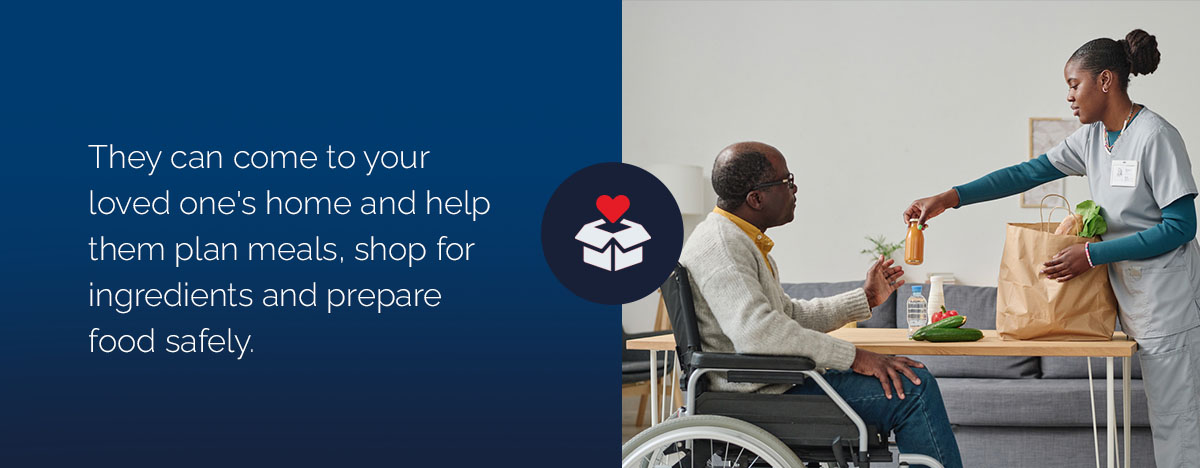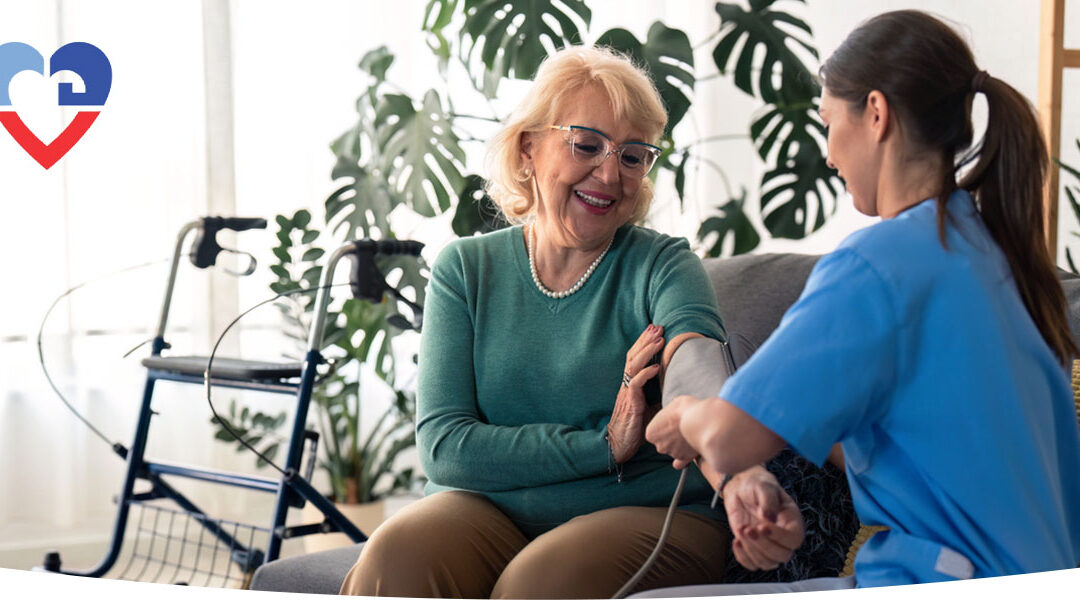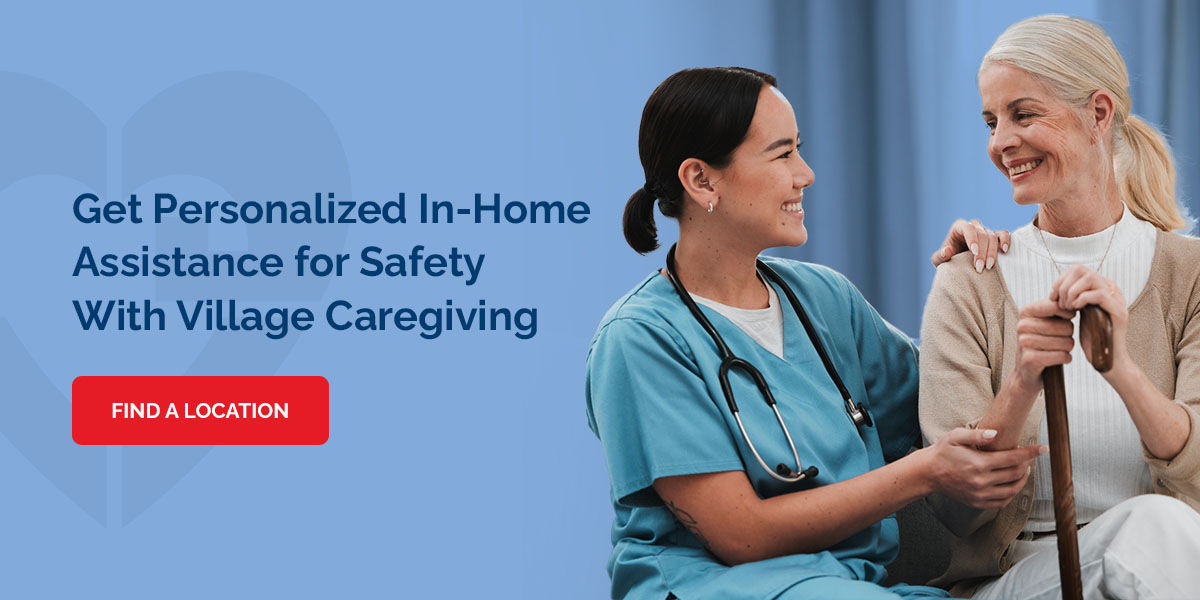The kitchen is often known as the heart of the home, where we gather with loved ones and cook up our favorite meals. Ensuring this environment is safe and secure is vital, especially for older adults. Kitchen safety measures can prevent falls and injuries and help older adults feel more independent and confident while cooking. If you or an older loved one spends a lot of time in the kitchen, you’ll want to take steps to make sure the space is as safe as possible.
Common Kitchen Hazards
While the kitchen is a space for nourishment and creativity, it can also pose hazards for older adults. Falls, slips and cutting injuries are common, as are food safety issues like spoilage and cross-contamination. Here’s a breakdown of common kitchen risks:
- Slippery floors and fall hazards: Falls are the leading cause of injuries in those older than 65, and they can be especially common in the kitchen due to wet floors from spills. Keeping floors dry and free of obstacles can avoid slips and stumbles.
- Sharp objects and improper knife handling: Many older adults struggle with grip strength and dexterity, which can increase the risk of cutting injuries in the kitchen. Using the correctly sized knives and stable cutting boards can help them while preparing food in the kitchen.
- Burns and scalds: The kitchen is filled with hot surfaces, boiling liquids and cooking appliances that can cause burns and scalds. Older adults can be more sensitive to heat or have slower reaction times, increasing their risk.
- Food spoilage: As we age, our immune systems weaken, leaving us more susceptible to foodborne illnesses. Older adults should check expiration dates, throw out old food and make sure their ingredients are always fresh before cooking.
- Cross-contamination: This is another risk in the kitchen that can lead to illness. To reduce the risk of food pathogens, ensure older adults use separate cutting boards for raw meats and vegetables. If they are sometimes forgetful, you could offer color-coded cutting boards and help them prep meals in the kitchen.
How to Prevent Emergencies and Promote a Safe Kitchen for Older Adults
Kitchen safety for seniors is essential for preventing accidents and promoting a more secure, confident kitchen. If you need extra assistance in the kitchen, family caregivers can also be an ideal solution. They can come to your loved one’s home and help them plan meals, shop for ingredients and prepare food safely.

The following are some other practices you or a loved one can use to avoid injuries and health hazards:
1. Be Proactive Toward Emergencies
Kitchen emergencies can happen in an instant, and taking proactive steps to prevent them is key. This way, you can help prevent injuries and other emergencies so your loved one can spend more time in the kitchen and cook more confidently. Tips include:
- Install fire extinguishers and smoke alarms
- Clean out the ventilation system to keep the air clean and fresh
- Clean up spills to prevent slips
- Keep emergency contact numbers and first aid kits easily accessible
It’s essential to know how to address injuries. For example, you can handle minor burns by quickly running cool water over them for about 10 minutes. To address a cut, apply pressure with a clean cloth. Contact emergency services for severe injuries.
2. Create a Clutter-Free, Accessible Kitchen
A clutter-free kitchen is vital for both safety and efficiency. Keeping kitchen items at waist or shoulder level can help your loved one access what they need without stretching or bending excessively. Cleaning clutter from floors can also prevent trips and injuries. Other kitchen hacks for the elderly include:
- Nonslip mats, rugs and flooring to prevent falls
- Grab bars near workstations
- Stable seating options for extra support
4. Use Checklist Reminders for Food Storage
Food safety for older adults is critical, and placing checklists or reminders near food prep areas can help prevent spoilage and foodborne illnesses. These should include proper food storage techniques like checking expiration dates or labeling leftovers with dates to ensure freshness. Other practices include:
- Keeping raw meats away from ready-to-eat foods
- Storing perishable items in the fridge right away
- Using airtight containers to prevent spoilage
- Regularly cleaning and organizing the refrigerator to discard expired items
5. Use Color-Coded Cutting Boards and Utensils
Color-coded cutting boards and utensils can help older adults avoid cross-contamination. You can assign specific colors for different food groups, such as red for raw meats, green for vegetables and yellow for cooked foods. Colored storage containers might include blue for dairy products, orange for fruits and brown for leftovers. A visual system can help older adults remember which tools to use for each food type and when to throw away old food, which is especially helpful if they have memory difficulties.
6. Use Ergonomic and Assistive Kitchen Tools
Many tools can make cooking easier and safer for older adults. For example, easy-grip utensils can help them handle food more easily and reduce the risk of accidents. Handy kitchen gadgets for older adults, such as jar openers, peelers and automatic can openers, simplify tasks and promote independence. Other tools include:
- Oven guards: Reduce the chance of burns with tools like oven guards. While pot holders help you pull oven racks in and out, these guards protect the skin from hot metal if your hand or arm brushes a rack by mistake.
- Plastic utensils: Use plastic utensils since they’re often lighter and easier to grip than metal ones. They can also be helpful for weakened hand muscles or conditions like arthritis so that older adults can eat more comfortably. Some plastic utensils also come with features like larger handles or textured grips.
- Safety cutting boards: These cutting boards can be adapted for users with limited hand function or vision, adding more stability so older adults can cut fruits and veggies more safely. They usually feature tall guides to keep the knife in place, rubber feet to keep the board from moving and ends that slide open to accommodate different knives and foods.
- Antifatigue mats: Antifatigue mats can reduce strain on the legs and back when standing. Typically made from rubber, vinyl or foam, they can be especially beneficial for older adults who might have trouble with achy joints or keeping balance while standing for a long time.
7. Implement Technology-Assisted Safety Features
You can use technology to your benefit in the kitchen in several ways. Stovetop monitors with automatic shut-off systems can reduce the chance of kitchen fires, ensuring burners are off when not in use. There are also automatic shut-off kettles, coffee makers and pressure cookers to avoid accidents.
You can install motion-sensor lights to make it easier to move around the kitchen, especially during nighttime. Voice-activated assistants like Amazon Echo can help older adults set timers or even call for help — all hands-free.
Get Personalized In-Home Assistance for Safety With Village Caregiving
These kitchen safety measures can help you reduce the risk of accidents and promote a safe cooking environment. Be sure to work with your loved one to find possible improvement areas in the kitchen to make their living environment safer. Village Caregiving offers personalized in-home assistance tailored to individual needs, providing the support your loved one needs to maintain more independence and safety in the home.
Our family caregivers can help with essential tasks like cooking and mobility, helping them get around the kitchen and eat nutritional foods that are good for their health. With the right resources and care, your loved one can continue cooking and enjoying meals in a safe environment.
Contact us today to learn more about our home care services!



Recent Comments